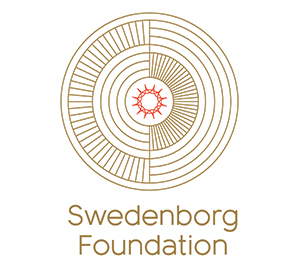Swedenborg Foundation Publishers
The History of New Thought
From Mind Cure to Positive Thinking and the Prosperity Gospel
Distributed for Swedenborg Foundation Publishers
The History of New Thought
From Mind Cure to Positive Thinking and the Prosperity Gospel
Anything is yours, if you only want it hard enough. Just think of it. ANYTHING. Try it. Try it in earnest and you will succeed. It is the operation of a mighty Law.
Does that sound like something from the latest spin-off of The Secret? In fact, those words were written in 1900 by William Walter Atkinson, the man who authored the first book on the “Law of Attraction.”
Atkinson was only one of the many and varied personalities that make up the movement known as New Thought. Composed of healers, priests, psychologists, and ordinary people from all levels of society, the proponents of New Thought have one thing in common: a belief in the power of the mind. In The History of New Thought, Haller examines the very beginnings of the movement, its early influences (including Swedish seer Emanuel Swedenborg), and how its initial emphasis on healing disease morphed into a vision of the mind’s ability to bring us whatever we desire.
While most histories of New Thought tend to focus on churches and other formal organizations, Haller reveals that New Thought has had a much broader impact on American culture. Bestselling authors from the late nineteenth century and onward sold books in the millions of copies that were eagerly read and quoted by powerful politicians and wealthy industrialists. The idea that thoughts could become reality is so embedded in American culture that we tell each other to “be positive” without ever questioning why. New Thought has become our thought.
Excerpt
In an address delivered at the close of the summer session at Harvard’s School of Theology in 1909, President Charles W. Eliot (1834–1926) identified several characterizations of future religions. First, they would rely less upon authority—both organizational and literary—as a means of ensuring its role in society. Second, there would be less adherence to the personifications of primitive forces such as mountains, fire, and earthquakes as symbols of deities. Third, there would be less reliance on dead ancestors, teachers, and rulers. Fourth, future religious life would not be constructed around personal welfare or safety. Fifth, religions would not be sacrificial or expiatory in nature. Sixth, they would be less anthropomorphic in their representations of God. And seventh, they would be less ascetic and gloomy. He also predicted that concepts of God would adopt the language of modern physics by including such descriptive terms as energy, vital force, omnipresence, and infinite spirit. In addition, religion would be monotheistic, indwelling, and immanent in all things, and reject any conception that humans or God might be alienated from the world. Most important, humans would discover God through self-consciousness. There is in each individual, Eliot observed, “an animating, ruling, characteristic essence, or spirit, which is himself.” It was this personality or soul that rallied the body. The religions of the future would no longer approach evil or human pain and suffering as punishment or moral training but as a preventable evil. “Institutional Christianity as a rule condemned the mass of mankind to eternal torment,” he noted. “The new religion will make no such pretensions, and will teach no such horrible and perverse doctrines.” Instead of justice, the religions of the future would emphasize God’s all-pervading love.
Eliot’s address was not just a prediction of religion and spirituality in the future, but an unusually prescient description of New Thought, which, by the start of the twentieth century, boasted some four hundred churches and centers serving approximately a million adherents. By the Second World War, its numbers had swelled to between fifteen and twenty million. Today, estimates are difficult, since a large portion of New Thought’s more secular literature is unattached to any specific church or organization. We may, in fact, be justified in calling New Thought a “secondary religion” whose churched and unchurched adherents profess teachings built on principles centered around healing, self-discovery, and empowerment.
The passage of American metaphysical thinking from Calvinism to New Thought took a circuitous route that began with sober orthodoxy and worked its way through a fashion spread of newly found sciences before turning sympathetically to the appeal of a dogma-free religion as conceived by Swedenborg and temporized by Emerson. Out of their inspiration emerged a school of thinking whose gifted teachers constructed an idealistic philosophy of free spirits searching for a pluralistic community of cooperating minds. Some of these teachers taught a science of mind using the empirical reality of the self to achieve personal and collective growth. For others, it was the more antiquated concept of the soul that asserted itself. In both, however, there was the acceptance of belief, however derived, as the basis for action. In this sense, New Thought became an expression of tolerance, of imagination, and of contentment with life, including its many paradoxes. Having fused together the faith of the seventeenth century, the reason of the eighteenth, and the feeling of the nineteenth, New Thought broke into the twentieth century with what one might call a genuine “Americanism”—a worship of the practical over the theoretical, of self-sufficiency over self-surrender, of instant over delayed gratification, and cash value as the measure of personal success.

